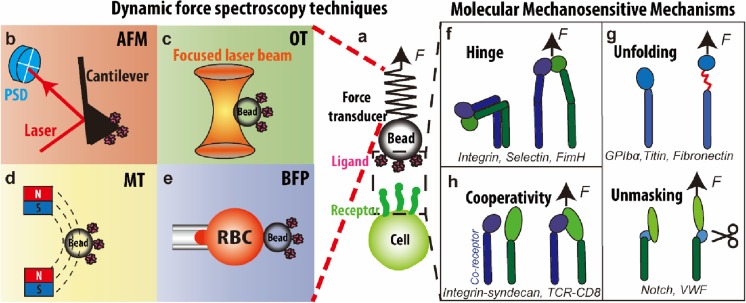Fig. 2.
a–e Dynamic force spectroscopy techniques. a Generic dynamic force spectroscopy where a force is applied to the receptor–ligand bond spanning between a cell surface and a force transducer. Force is determined respectively by cantilever deflection (b), bead displacement (c), gradient of the magnetic field (d), and RBC deformation (e). b Atomic force microscopy (AFM) where force is applied to individual molecules tethered between a functionalized cantilever and a surface. c Optical tweezers (OT) where a protein-coated bead is held by a laser beam. d Magnetic tweezers (MT) where permanent/electrical magnets are used to manipulate a protein-coated magnetic bead. e Biomembrane force probe (BFP) where a protein-coated bead is attached to the apex of a micropipette-aspirated red blood cell (RBC). f–g Molecular mechanosensitive mechanisms. Mechanosensitive proteins contain a motif or motifs that can change structures in response to mechanical forces, giving rise to hinge movement (f), unfolding and unmasking (g), and multiple receptor cooperativity (h)

